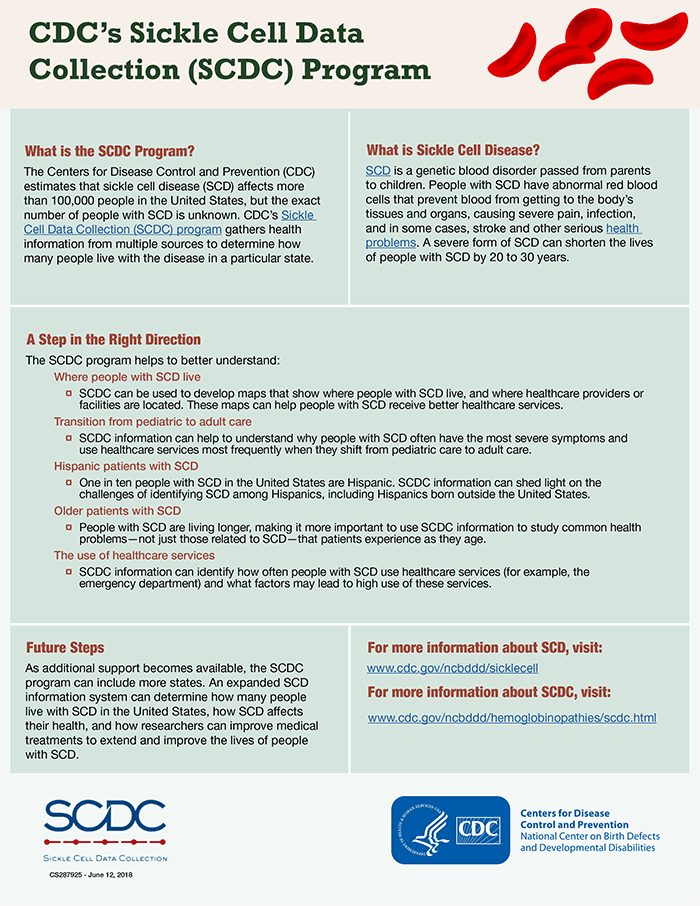About SCDC
SCD is a genetic blood disorder passed from parents to children. People with SCD have abnormal red blood cells that prevent blood from getting to the body’s tissues and organs, causing severe pain, infection, and in some cases, stroke and other serious health problems. A severe form of SCD can shorten the lives of people with SCD by 20 to 30 years.
What is the SCDC Program?
The Centers for Disease Control and Prevention (CDC) estimates that sickle cell disease (SCD) affects more than 100,000 people in the United States, but the exact number of people with SCD is unknown. CDC’s Sickle Cell Data Collection (SCDC) program gathers health information from multiple sources to determine how many people live with the disease in a particular state.
The National Academies of Sciences Engineering Medicine’s “Addressing Sickle Cell Disease: A Strategic Plan and Blueprint for Action” mentions that SCDC data are “used to support policy decisions at the state and federal level, inform researchers and providers via published manuscripts, and educate those living with the disease, their families and communities, and health care providers on the disease and the latest research on it.
A Step in the Right Direction
The SCDC program helps to better understand:
Where people with SCD live
- SCDC can be used to develop maps that show here people with SCD live, and where healthcare providers or facilities are located. These maps can help people with SCD receive better healthcare services.
Transition from pediatric to adult care
- SCDC information can help to understand why people with SCD often have the most severe symptoms and use healthcare services most frequently when they shift from pediatric care to adult care.
Hispanic patients with SCD
- One in ten people with SCD in the United States are Hispanic. SCDC information can shed light on the challenges of identifying SCD among Hispanics, including Hispanics born outside the United States.
Older patients with SCD
- People with SCD are living longer, making it more important to use SCDC information to study common health problems—not just those related to SCD—that patients experience as they age.
The use of healthcare services
- SCDC information can identify how often people with SCD use healthcare services (for example, the emergency department) and what factors may lead to high use of these services.
Future Steps
As additional support becomes available, the SCDC program can include more states. An expanded SCD information system can determine how many people live with SCD in the United States, how SCD affects their health, and how researchers can improve medical treatments to extend and improve the lives of people with SCD.
For more information about SCD, visit: www.cdc.gov/ncbddd/sicklecell
For more information about SCDC, visit: www.cdc.gov/ncbddd/hemoglobinopathies/scdc.html

